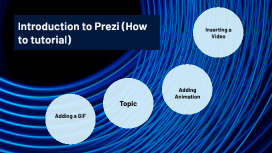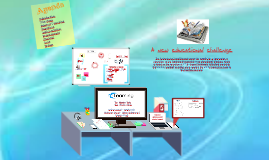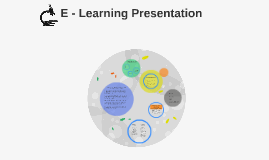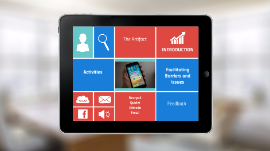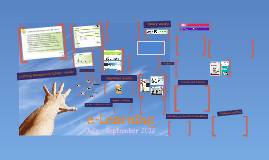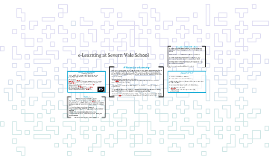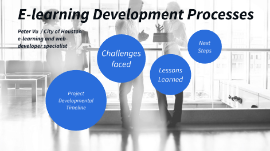e-Learning Presentation
Transcript: Phase 1 (continued) e-Learning at Severn Vale School Platforms and Infrastructure My vision for e-learning at Severn Vale School is: - to maximise the learning experiences and personal development of all our students to ensure that no child is left behind. - to enhance the learning and teaching experience of all subjects while still retaining key characteristics. - to increase and improve learning time, contact and feedback through the use of e-learning (e.g. flipped classrooms, instant feedback, anytime anywhere learning) - to increase teacher effectiveness so that administrative workflows are streamlined allowing more time to prioritise learning and teaching while ensuring that no colleague is left behind. - Ongoing VLE training - Presentation platforms (Powerpoint to Prezi) - Maximising YouTube in the classroom: https://www.youtube.com/channel/UCuua9FhcuUR-AeFSxUtuHGg/playlists - Creating screencasts and use of Video Demos [e.g. walking-talking mocks] (created by teachers AND by students) - Effective use of social media to support students (twitter / blogging dos and don'ts) - Open Source software (e.g. Google Docs) - Online Quizzes and Surveys (Socrative / Survey Monkey) - Capturing and celebrating creativity (pinterest, flicker, YouTube, Soundcloud) - Collaborative learning tools (google docs, VLE, DropBox) - Peripherals in the classroom (Digital Cameras, Video, Visualisers, IAWB) - Understanding mobile devices (tablet, hybrid-laptop, iPad, mobile phone) This needs to be in place before BYOD / 1:1 VLE explored and underpinned with a good level of staff and student confidence and usage both within the classroom and beyond. SIP targets shared and supported by DL Team / CPD teams. An established DL team which supports staff and drives e-learning through testing, pilot and research lesson study. Increased level of staff confidence and use of Digital Learning tools within the classroom. Decision made regarding BYOD or 1:1 or blend. Beyond 2016-17 Outcomes from 2015 - 2016 - Continuance as a SIP priority and CPD focus. - Roll out of mobile device solutions in the classroom. - Analysis of impact and next stage planning and development (dependent on emerging technologies...). - e-Learning sessions for parents (speaking your child's language). - Deeper exploration of e-Pedagogy. microtesting networked learning communities / peer to peer learning gaming technology - e-Learning will need to be a supported SIP focus driven top down. - Initial CPD / PLT sessions which are fun and interactive for staff delivered by DL Team: Phase 1 VLE - Needs to be fit for purpose, have multi-platform accessibility, interactivity, and become central to classroom teaching as well as taking the classroom beyond the school walls. - its learning: http://www.itslearning.co.uk - frog education: http://www.frogeducation.com/products/frogplay - firefly: http://severnvale46858.tryfirefly.com - google classroom: http://www.google.co.uk/intl/en_uk/edu/classroom/ We are moving ever deeper into a digital age where communication, expectation and identity are changing at a rapid pace. We can not predict where technology, commerce, education, culture and society will be in ten years time. We need to ensure that our own provision is in keeping with and developing life long learning skills for our students to flourish as part of the digital global village. A Vision for e-Learning Priorities and Pedagogy






